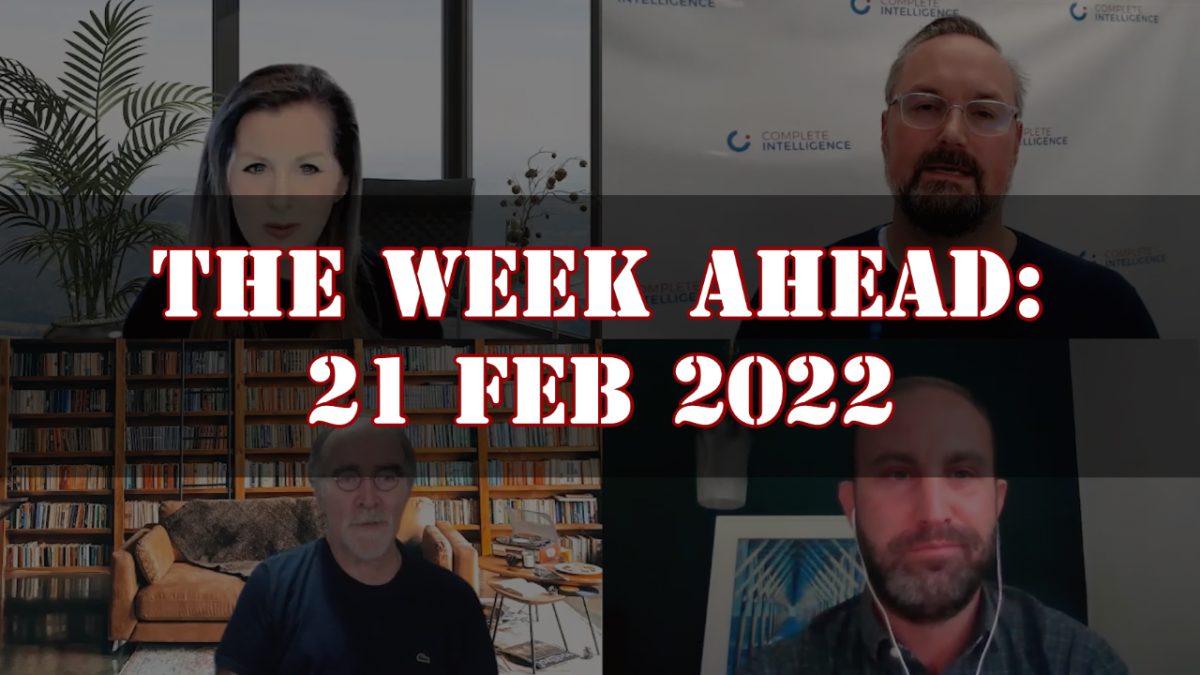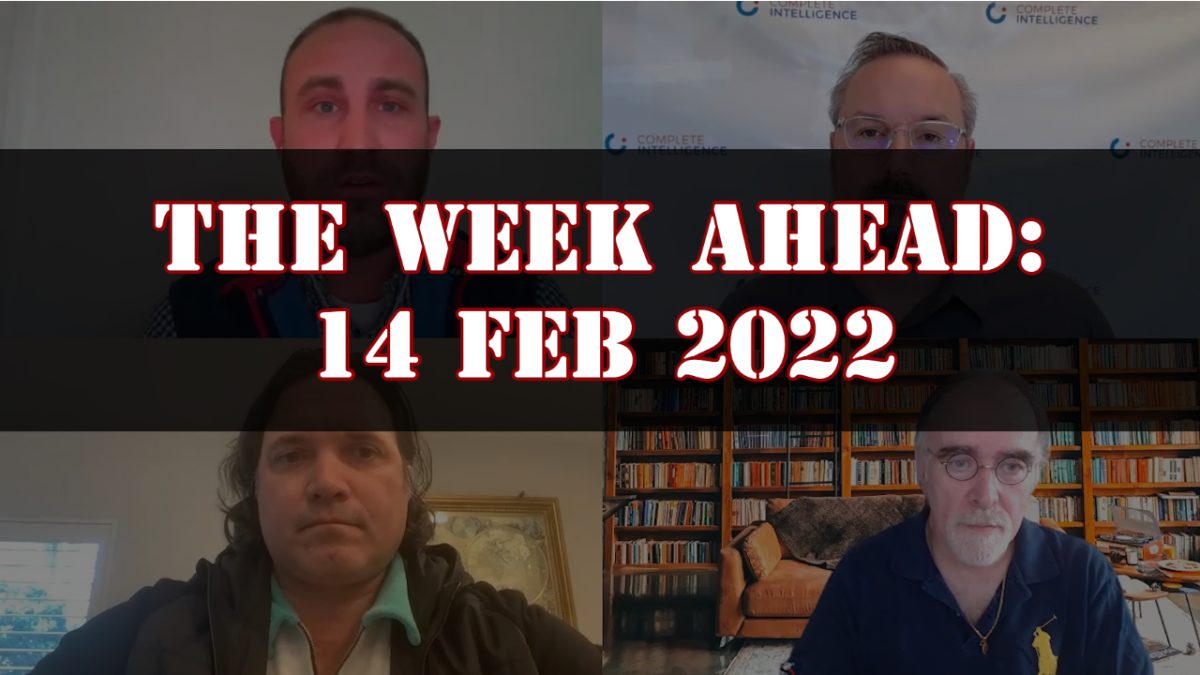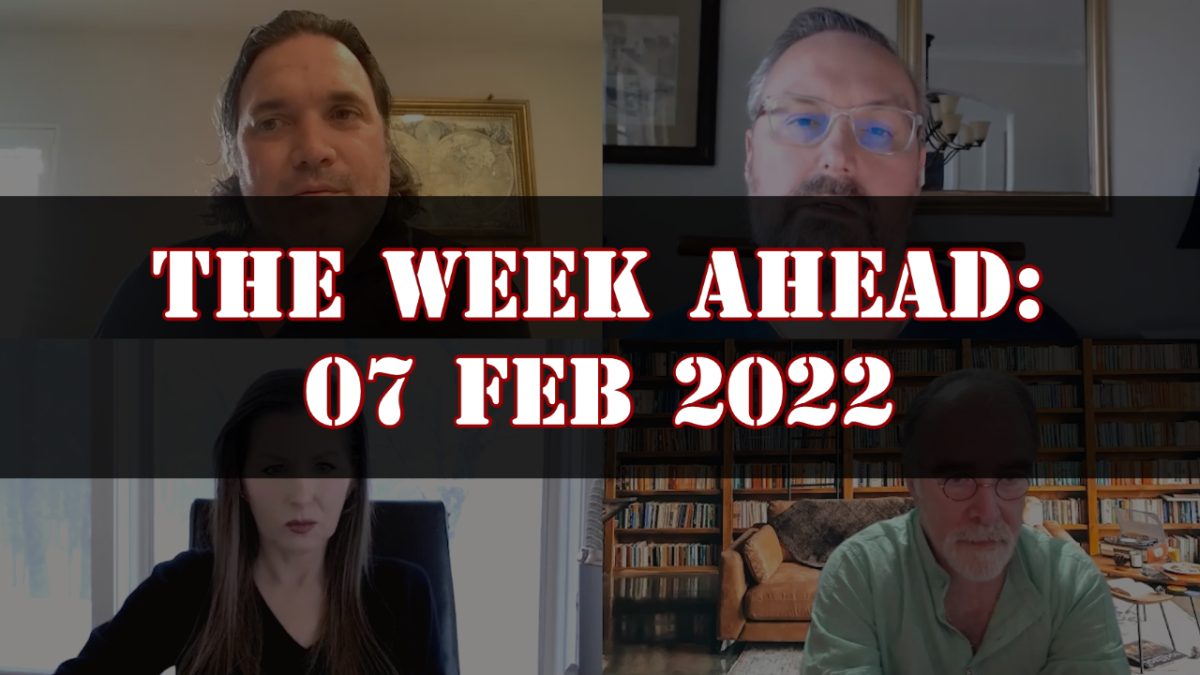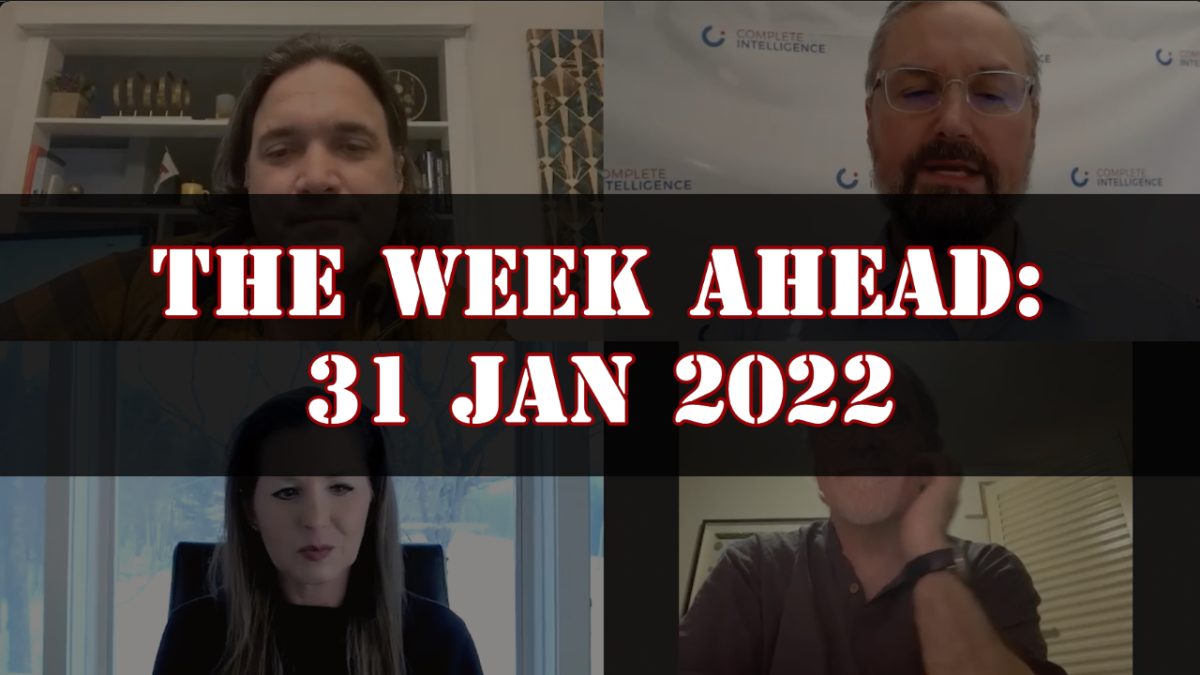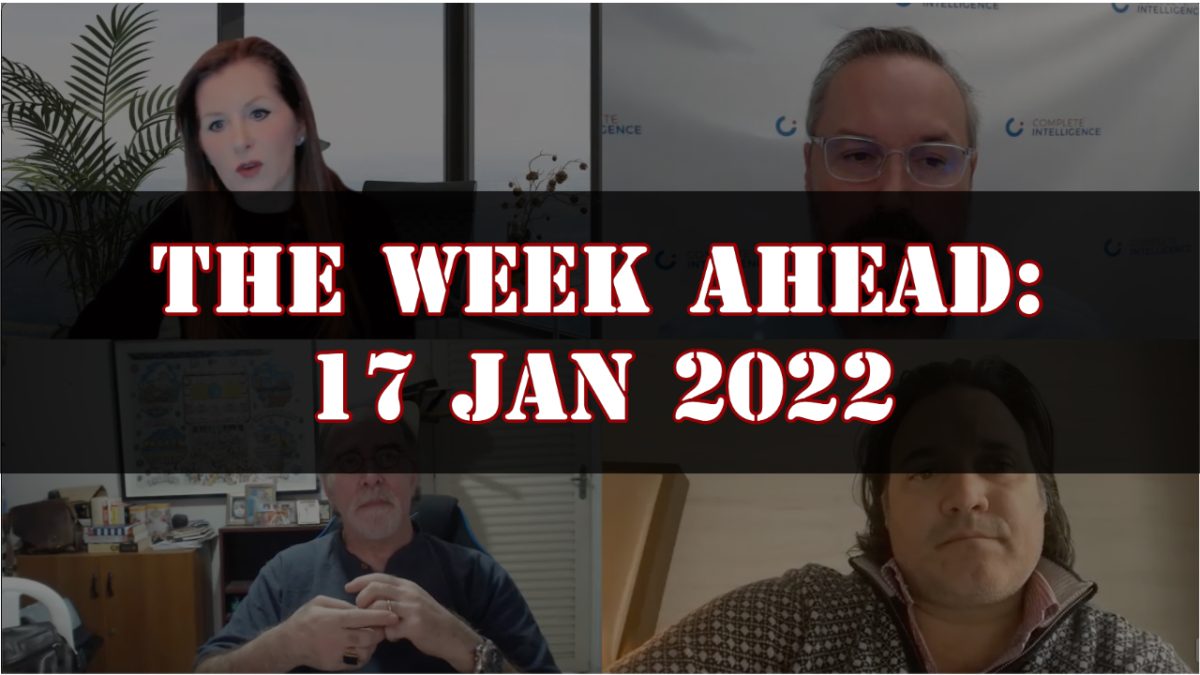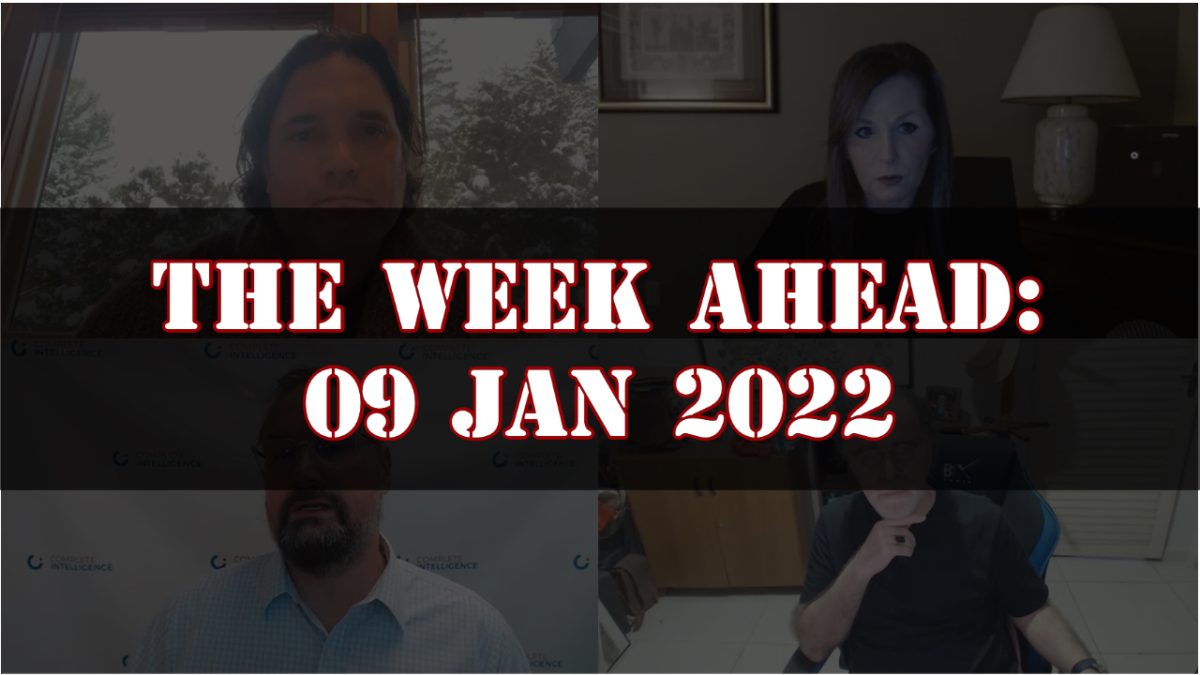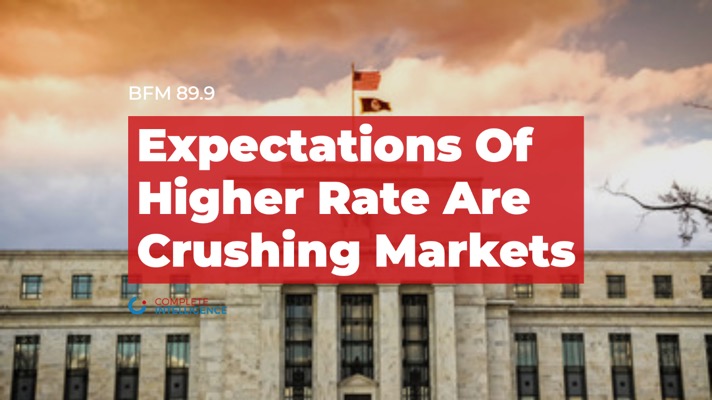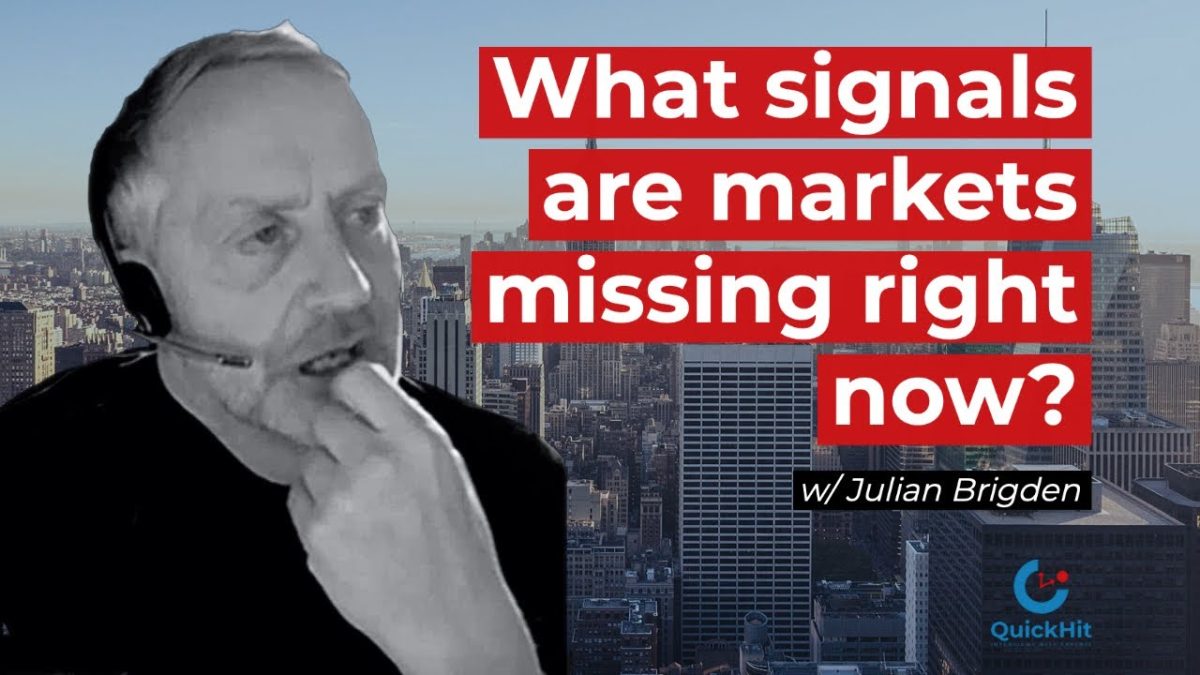As a start, we looked at the Friday’s trading session and what it means. Is this a bullish market?
We’ve made a few recommendations over the past couple of months. We hope you’ve been paying attention specially on $IPI (Intrepit Potash) and $NTR (Nutrien).
We’ve talked about the tumbling lumber markets in recent weeks. What are Sam and Albert’s current thinking on lumber as we’re looking at $LB lumber futures. Sam talked about housing last month. We looked at $XHB, the home builders ETF. How about the rates and housing? We’ve seen that homebuilders are getting hit with expected rate rises. What is the impact of this on the mortgage market, housing inventory, etc?
Shanghai has been closed for a few weeks now and the largest port in the world won’t open for about another week. How can the second largest economy continue to close when the West has already accepted Covid as endemic? How can manufacturers rely on China as a manufacturing center if they’re unreliable?
For the week ahead, we talked about the earnings season, their portfolios, and Albert talked about Chinese equities for months, etc. Is now the time to look at KWEB, which he discussed for some time?
We’ve got CPI out on Tuesday and is expected at around 7.9% and Retail sales on Friday, which is expected at around 0.3%. Inflation seems unstoppable and consumers seem to be getting tired of spending. Sam explains on this.
Key themes from last week
- Friday trading session
- Don’t say we didn’t warn you
- Rates and housing (Tuna & Caviar)
- China’s shutdown
Key themes for the Week Ahead
- Earnings season expectations
- Near-term equity portfolios
- CPI (Tuesday), expected 7.9%
This is the 14th episode of The Week Ahead in collaboration of Complete Intelligence with Intelligence Quarterly, where experts talk about the week that just happened and what will most likely happen in the coming week.
Follow The Week Ahead experts on Twitter:
Tony: https://twitter.com/TonyNashNerd
Sam: https://twitter.com/SamuelRines
Tracy: https://twitter.com/chigrl
Albert: https://twitter.com/amlivemon
Listen to the podcast on Spotify:
Transcript
TN: Hi, guys, and welcome to The Week Ahead. My name is Tony Nash. I’ve got Albert Marco and Sam Rines with us. Tracy is not able to join us today. Before we get started, if you don’t mind, could you please like and subscribe. That would help us out. And we’ll let you know every time a new episode is up and running.
This past week we saw a lot, but I think the most interesting thing or one of the most recent interesting things is Friday’s trading. We’re going to start talking about the market action on Friday, and then we’re going to get into a couple of things that we told you about trades that if you were paying attention, you would have seen. We’re actually going to go into rates and housing, and Sam’s going to talk a little bit about tuna and Caviar, that discussion from the Fed speech earlier this week. And then we’re going to talk about China’s shutdown, which seems to be getting worse by the hour. So first let’s get into the Friday trading session, guys. What are some of the things you saw on Friday?
AM: Well, from my perspective, the market is acting like crypto. I mean, we’re seeing interday moves on some of these equities, like 5% up and down. It’s a little bit silly. And you wonder if it’s like light volume, if it’s market manipulation by the Fed. It’s just uncanny. I’ve never seen anything like this before. And obviously the market is weak and we’ve talked about black clouds coming over the market and what’s going on. But I don’t see anything any catalyst that would say that this is the bullish market at all. So we’re waiting for multiple numbers of CPI, retail and whatnot. But for me, it’s just like everybody is on pause waiting to see which way this market goes before they take action.
TN: So a couple of weeks ago, we saw a lot of money move into equities. Right? So that money moved in. It’s just parking and waiting. Is that what’s happening?
AM: Yeah, I assume so. The Fed, as it just ups the rates, forces more money to move into the US market, which is actually a brilliant move. You know, this is what we’re seeing. A lot of money here, not knowing what to do at the moment.
SR: To Albert’s point, there’s a lot of money that’s moved in here, but it’s moved into some pretty passive areas that it’s just not moving much in terms of the overall market. You look at fixed income, right? Lots of money moving in there, short into the curb, et cetera, et cetera. I think that’s some of the more interesting stuff as well. But there’s also this weird thing going on where equal weight is outperforming the market cap weight. And has been for some time now, particularly over the last week. If you look yesterday, S&P closed in the red, but if you were equal weighted, close green and it closed green on a non trivial basis, and it was 35 basis points, something like that.
That deviation between market that was led by predominantly tech and only tech, to a market that’s led by other sectors in general is something I think under the surface that paying attention to it can be something that at least can make some money in the near term.
TN: Including Crypto Walmart, which we’ve seen over the past week as well. So we’ll talk about retail later in the show.
Okay. So we had as a group talked about some calls over the past couple of months. Some of those were calls earlier, but let’s get into those just to walk through. Albert, you and Tracy had talked about Intrepid Potash. She talked about Nutrien. We’ve got those on the screen right now. Can you walk us through those and kind of what you’re thinking was on those and what’s happened? What do you expect for those to happen in the near term?


AM: Well, speaking about IPI, Intrepit. It’s like a leveraged ETF in the fertilizer market. That thing swings 5-10, 11% in a week, no problem. That call was basically on the premise that the Ukraine war is going to go on. Russia is cutting off the fertilizer supply. Belarus has a big fertilizer supply. OCP in Morocco has shifted from actual fertilizers to more like phosphate batteries for EVs.
So it only made sense that besides Mosaic, which is the 800 pound gorilla, IPI and Nutrien were just the logical choices for investments.
TN: And is there room to run on fertilizers like there was a target put on Nutrient by one of the banks of like 126 or something? Do you think we could keep running on those trades?
AM: We can, right? Certainly we can. It just really depends on what goes on with the Russians and whatnot. My only risk for running too far is that the Dixie could go to 105, 110 and then we have significant problems across the market, not just fertilizer prices.
TN: Okay. So even if dollar does go to 110, we’re planting now in the US, right. And now and for the next couple of months. And the fertilizer demand is right now and it has been for the past couple of months. But it’s especially right now, is all of that, say planting demand, is that all priced in already, or do you feel like some of that is to come?
AM: I think it’s pretty much priced in. And let’s just be careful because some of the farms that are planting crops are using nitrogen and also fertilizer derived from nat gas. So it really depends on which way the farming community wants to go, what they see the most profitable crops.
TN: Okay, great. That’s good to know. We also talked about lumber, as I remember a conversation probably three or four weeks ago where I think, Sam, you brought up lumber and how lumber was coming off. Can you walk us through that trade, as we have it on the screen?

SR: Yeah, sure. I mean, it’s a Fed trade, right. It’s a Fed tightening quickly, mortgage rates going up and housing demand coming down. The idea that a Fed going this quickly and having the market priced in, there’s a difference. Right. The Fed has only moved 25 basis points.
TN: Right.
SR: The market has done the rest of the tightening for it across the curve. It’s been pretty spectacular. Housing, housing related stocks, those in general, are going to be the first thing that the Fed affects and they’re going to be the first thing that the Fed affects on the margin very quickly. And you’ve seen mortgage rates go to five plus percent.
TN: Sure. Before we get on to housing, I just have a couple of questions about lumber and other commodities. So the downside we’ve seen come in lumber over the past week or so. Do we expect that to come to other commodities as well? I mean, things like weed and corn, there’s still pressure upward pressure on those. But do we expect other commodities to react the way lumber has?
SR: Oh, no, I would not expect the foodstuffs to react in anywhere near the same manner as lumber. Right. Lumber is a fairly… Lumber, you cut it up, you put it in inventory, you sell it, and then you use it for something.
TN: Right.
SR: It doesn’t last forever in good condition either.
TN: Great. Okay, good. Thank you. Now moving on to home builders, which is where you are going. You also talked about XHB, I think two or three weeks ago, and we’re flashing some warning signs about that. We’ve seen obviously rates rise. I was speaking to a mortgage broker earlier this week. He’s doing mortgage at almost 6% right now and expects them to go up kind of close to 8%.

We’re starting to see the resurgence of ARMs. People are already getting back into adjustable rate mortgages because 5.99% is high. Just as a bit of background, less than 10% of US mortgages over the past few years have been adjustable rates. So can you talk us through XHB? And maybe you had mentioned earlier kind of Home Depot and some of the other home makers. Can you talk us through what kind of… Home Depot was a leading indicator on that? Is that fair to say?
SR: It’s fair to say Home Depot and Lowe’s this kind of ties into the lumber conversation. Home Depot and Lowe’s were two of the best at ordering and trying to actually keep inventory on the shelves, even when during the first tremendous spike in lumber. Right. So they kept a lot of lumber on the shelves. They currently have a lot of lumber inventory on the shelves. And it’s part of the reason that you’re seeing what could be described as almost an over inventory of lumber, not just at those two entities, but across the board, because everybody had to buy lumber in order to keep it in stock.
So, yeah, Home Depot and Lowe’s are the tip of the spear in terms of both home building and in terms of home remodeling. Those are both fairly significant drivers of the business there. There’s a little bit of weekend contractor type deals, but very little.
So overall, I would say they are a leading indicator and they have not been acting very well. But when you have mortgage rates to your point at 6%, that creates a problem for the marginal buyer. It’s not a problem for somebody who owns a home. Right. You have your mortgage rate locked in, et cetera, et cetera. It’s not going to destroy you. It might set off being able to put a new deck and redo a pool or something like that. But it’s not going to hurt you in any meaningful way.
TN: Right.
SR: It does hurt the marginal buyer. It hurts the first time buyer, et cetera. So you begin to have slower turns in housing and you begin to have problems with where does that incremental inventory of homes go? And that’s the real problem with higher invetories.
TN: Right. Before we move on to officially talking about rates and housing, I’ll share a story about a friend who is building a house and their lumber broker who should be able to get the best pricing actually has worse pricing right now than Home Depot. Okay. So they can actually go to Home Depot and get better pricing than their lumber broker. And that’s how messed up the lumber market is right now. They’re arbitraging their lumber broker versus retail any given week in their bulk buying to make sure that they can get their house built. So that market both on the lumber side and on the housing side is just a mess.
So let’s officially go to housing and rates. We’ve done a lot of the discussion, but there was a CNBC story about rising mortgage rates are causing more home sellers to lower their asking prices.

And Sam, you talked about that marginal buyer, which is great, and that new buyer. When I talk to people who are doing mortgages, they tell me that even with the rate rises we’ve seen over the past couple of weeks, there is still not a lot of inventory on the market. That’s a big issue. And they’re not seeing a fall in demand for new houses. So is this kind of a last minute rush for people to get a house before rates rise even more? Is that plausible?
SR: There’s some plausibility to that. Yeah, 100%. The other thing is that we’re in Texas. Right. The demand for housing in Texas, the demand for housing in Florida does not tend to be, I would say, as tied to mortgage rates as everywhere else. The rest of the country is much more sensitive to what’s going on. Texas and Florida and a couple of other spots simply have too much inbound demand from higher priced areas. So California, New York, et cetera. There’s still an arbitrage when you sell a place in California or sell a place in New York and move to Texas, Florida, some of the Sunbelt States.
So it’s tough to take Texas as an example, particularly Houston. We’re actually the fourth largest city in the country, and yet we do not get counted in the S&P Schiller because of how different the housing market is here. Dallas gets kind of for whatever reason, but Houston does not.
TN: We’re not jealous at all about that.
SR: No, we’re not.
AM: Go ahead, Sam. Sorry.
SR: But just to wrap that up, I do think that there’s a nuance to Florida and Texas that should almost be ignored. When I look at the data, I’ll be taking out the Southeast region just because it’s one of those that is a little special at the moment.
AM: Yeah, that’s a key point that I always made is like, because of the migration patterns in blue to red States, things are just really wacky. Florida and Texas, Arizona will be red hot. Meanwhile, Seattle, Chicago, parts of New York are just dead spots at the moment. So until that all gets weeded out, people stop moving. Then we’ll actually see the housing market starting to cool off.
TN: Right? Yeah. I was just up in Dallas yesterday, and things are just as hot up there. And the immigration from the coast to Dallas, especially around financial services and tech, it’s just mind blowing. It is not stopping. It has been going on for probably five years, and it’s just not stopping. Those counties just north of Dallas are exploding and they continue to explode.
Okay, so our next topic is China and China’s slowdown. Shanghai has been closed for a couple of weeks with kind of a renewed round of Covid. And obviously the largest Port in the world, which is in Shanghai, is closed. And that kind of exacerbates our supply chain issues, especially around manufactured goods that we’ve been seeing globally. We’ve seen overnight that. Well, not just overnight, but over the last, say, five days. Food has become really scarce in Shanghai. We’ve seen people on social media talking about how it’s difficult to get food. We’ve started to see little mini protests around Shanghai, around food. And things are seem to be becoming pretty dire.

Overnight, we saw that parts of Guangzhou that the government is considering closing, parts of Guangzhou, which Guangzhou is the world’s second largest port. So the two largest ports in the world, there is a potential that those are closed. There is also gossip about parts of Beijing being closed as well. So I’m curious, what do you guys think about that? I can talk about China for days, but I’m curious, kind of, what alarm bells does that raise for you? Not just for China, but globally.
AM: Well, Tony, you recall, you Balding, and I discussing China’s attempt to attack Taiwan and what had happened. And I had pointed out that closing those ports would cause food insecurity and here we are. Although it’s not a Taiwan invasion, it’s a zero Covid policy that shut down the ports and now we have food stress in China causing all sorts of problems.
Most China observers, especially yourself, know that Shanghai has always been the epicenter of uprising for the CCP. It’s a problem for them. They’ve always tried to wash it. Maybe that’s why they’ve come down hard on Zero Covid Policy. That’s something that I’d have to ask you. But from there, this was very predictable. I mean, you shut down ports, China has a food security problem.
TN: On a good day, China has a food security problem. It is an issue that the Chinese authorities worry about day in, day out, not just when there’s a pandemic. Okay. So one of the things that I was talking to some people about yesterday is why is China closing down? Why are they closing down these big cities? There’s a lot of gossip. You can find a lot of theories around social media saying there’s some sinister plan, honestly and for people that don’t know. I’ve done work with Chinese officials over years. And the economic planners I was seconded to economic planner for almost two years. I believe that they’re closing because they’re worried about how the China virus looks, meaning they don’t want Covid to be seen as the China virus. And they worry about the world’s perception if there’s another outbreak that comes from China.
And so I think the leadership believes that they have to be seen to be disproportionately countering COVID so that there isn’t more wording and dialogue about the kind of, “China virus.” And so, again, I don’t think there’s something sinister going on. There’s a lot of gossip about China intentionally trying to stop supply chains to bring the west to its knees and all the stuff. I don’t believe that at all. I think it’s real sensitivity to how they look globally.
Of course, there’s the public health issues domestically. That goes without saying. But I think a big part of it is how do they look globally.
AM: Yeah, but doesn’t shutting down these ports is going to cause even a bigger spike in inflation within China and actually globally?
TN: Oh, absolutely. This is the one thing that I think they didn’t plan on is they’re about to embark on a whole lot of fiscal, a whole lot of monetary stimulants because they have major government meetings in November of this year. So they absolutely cannot go into recession.
But here’s what I have been thinking about. Okay. We’re looking at a Russia-Ukraine war that could potentially bring down Russia and destabilize Russia domestically. We’re now over the past couple of weeks, looking at a China that is starting to self destruct domestically. And I don’t know of anybody who had the domestic issues of both China and Russia as systemic risks in 2022. These things are just coming out of nowhere. And those two risks can be destabilizing for the whole world. And I’ve said for some time, Western governments have to sit the Chinese leadership down and say, look, you guys are systemically important globally. You need to get your act together around COVID, and you have to normalize your economy because it’s hurting everybody.
AM: Great points. Now, going back to Guangdong, there are some really elite families in China out of that area, really wealthy ones, that actually basically gives Xi the support he needs in the CCP. If he loses those families, there’s real trouble for Xi going forward.
TN: I think there’s trouble for him anyway. I think he is not a one man show. Contrary to the popular Western opinion, Xi Jinping is not a one man show. He is not a single Emperor, kind of claiming things from on high. There is a group of people who run China. It’s just too big for a single individual to run.
So I think Xi has been, I wouldn’t necessarily say on thin ice, but I think things have been risky for him for some time. And as you say, it’s pretty delicate for him right now. And if he doesn’t handle this deftly, I think, again, there could be some real destabilizing factors in China. So this is something again, they didn’t plan for. They were talking about major infrastructure stimulus. They were talking about monetary stimulus, getting ready for this big party in November to nominate Xi for more power and all this other stuff. But it’s possible that these events could really hurt him and really hurt his relationships, meaning the key people around him and then the other factions.
Because as much as people say that China is a one party state, sure, it’s a one party state. But there are factions within that one party. And it should be alarming for China and destabilizing China should be alarming for other people around the world.
AM: Yeah. Same thing as Putin. Like their factions behind them that keep them in power. Same thing as Xi. Most autocratic rulers have a circle of trust behind them that keep them in there. If Xi falls and China starts to, I don’t want to say crumble, but at least wobble, if we think we have serious supply chain issues now, wait till that happens.
TN: Oh, yeah. So Russia is important on energy and a couple of other things, but it’s not globally systemically important on a lot. Okay. I would say maybe it’s regionally important, especially to Europe, but China is globally important. And if they can’t figure this out, it will destabilize everybody.
And so I think Western governments need to not lecture to China, but they need to go forward with real concern about China. How can we help you guys out? Right? How can we help you out? Can we get you vaccine? Can we get you support? Is there anything logistically we can do? That is a way that Western governments can come to the legitimate aid of China. They’ll act like they have it all together, but they don’t. It’s obvious. We see it every day on social media. They don’t.
So Western governments really need to offer genuine aid to China in terms of intelligence, in terms of vaccines, in terms of capabilities, and so on and so forth.
Good. Anything else on that?
AM: No, we covered that.
TN: Okay. Looking at the week ahead. Guys, we’ve got earnings season coming up. Can you talk us through your expectations for earnings season?
SR: Sure. I’ll jump in here quickly. I think there’s a few things to watch. One, the consumer sentiment has been dismal. Right. For the last six months. It’s falling off a cliff. Where the US University of Michigan survey, well below where it was at peak of Covid. But we haven’t necessarily seen retail sales. We haven’t seen corporate earnings and corporate announcements follow that sentiment lower whatsoever.
For anybody paying attention this past week, you had Costco with absolute blow out numbers in terms of its same store sales. Take out gasoline, take out anything, and you still have 7% foot traffic. That was stunning. And that’s not a cheap place to shop.
TN: Right.
SR: So that’s indicative of the higher end consumer that’s still holding in there, at least fairly well through March. That’s pretty important. So then there was Carnival with its best week ever in terms of bookings. Those two things are pretty important when it comes to what is the consumer actually doing versus what is the consumer actually saying, which I think is very interesting.
This week we’ll have Delta Airlines. It’ll be interesting to kind of listen to them and see what their bookings have looked like, see what their outlook is for the summer. And then I’ll be paying really close attention to the consumer side of the earnings reports, not necessarily as much the banks. I don’t really care what Jamie Dimon has to say about Fed policy, but I will say…
TN: I think she do.
SR: Nobody does. But I’ll say the quiet thing out loud. But I will be paying very close attention to what the earnings reports are saying about the consumer, because the consumer drives not just the US economy, but the global economy generally, both on the goods side, services side and really trying to parse through what’s happening, not what the US consumer keeps telling us is happening.
TN: Go ahead.
AM: Sam, really quick. How much of these earnings because I’m a little bit suspicious of how much is it inflationary, prices of everything are higher and remnants of stimulus PvP, whatever the people have been getting for the past year. How much is that calculated?
SR: Yes, which is one of the reasons why it’s a great point, one of the reasons why I pointed out Costco. Costco much less on the stimulus side, much less on the saving side, much more on the high-end kind of consistent consumer. And with foot traffic up 7%, inflation was I think it was about 8%, give or take. So they’re passing on the inflation and they’re still getting the foot traffic. So I think that’s an important one.
On the CCL side, it was after the bookings were after the significant stimulus had already run out or run off. You just weren’t getting checks. I think that was also an indication that maybe there’s a shift from the goods to the services side. The one thing that was somewhat disconcerting, if you’re paying attention to the higher end consumer, was Restoration Hardware. They ran down their book to about 200 million in backlog and don’t really appear to be bullish about this year. They guided well below what some were expecting. I think we’re going to hear a lot more about that, partially because they just can’t get enough inventory in time and they’re kind of in trouble on that front.
AM: Yeah.
SR: To your point, it’s a lot of inflation, but some of these guys are seeing some pretty good traffic, too.
AM: Yeah, actually, funny, you mentioned Restoration Hardware because that was one of the things I was looking at specifically for the housing market, like who’s buying a $30,000 at the moment right now. You know what I mean? It’s just silly.
TN: Yeah, that is silly. Okay, great. Thanks for that. And I’m interested to see how the earnings from Q1 also translate to Q2. I’m expecting a real turn in Q2, and I’m wondering how much that is on investors minds as they look at Q1 earnings.
Albert, as we move into the next point around kind of short term or near term equity portfolios. You’ve talked about KWEB for some time, and I’d like you to, if you don’t mind talking about KWEB a little bit, but also if you and Sam can help us understand what is your thinking right now on your term portfolio.
AM: I mean, KWEB is one of my favorite little stocks because it’s a China technology index and it’s been beaten down to a pulp by the Fed. They have absolutely annihilated not just China, but pretty much all foreign equities. And from my perspective, you’re looking at China stimulating in the fall of the shore of Xi. So it’s like it’s a no brainer to me. I think KWEB at 28 is a fantastic deal. Start piling into that.
One of my other ones I was looking at was FXI, which is basically all the China’s big wig companies. So that’s another one I was looking at right now. In terms of the US equities and portfolios, I mean, we’re so overvalued right now. Where do you put your money into? One of my favorite stocks was TWY a tightened tire. It makes 85% of the world’s agriculture tires. Right. I mean, this thing ran up from $1.45 to $14 at the moment. You know what I mean?
How do you put more money into equities at this stage without some sort of correction or something happening with the Fed to show us which way they’re going to go? Are they going to go 50 basis points in the next meeting and then another 50 and another 50, or they’re just going to use a long bond to actually what Sam said earlier and I forgot to bring it out is they’re using the long bonds also to kill the market. So it’s just like,what do you do?
TN: Yeah. The change to valuations we’ll see over the next three months seem to be really astounding.
AM: They’re just silly. Everything is so inflated at the moment. I can’t in good conscience, say get into this stock or get into that stock, because I know how is it going to run right?
TN: Exactly. Sam, anything to add on that?
SR: I love Albert’s point on KWEB. Think about what’s built into the risk there. You have the risk of the SEC delistings. You have the risk that appears to, at least on the margin, be waning. You have the threat of sanctions on China from them helping Russia. You have a lack of stimulus. You have shutdowns. There’s a lot weighing on that index on top of Fed, et cetera. There’s a lot weighing there on that. And you begin to have some of these calls, the geopolitical onion risks begin to be pulled back a little bit. And that to me is a spectacular risk reward in a market that is generally pretty low on the reward.
TN: Okay.
AM: I had one of my biggest clients from the golden guy. I mean, it’s gold and KWEB is what he’s seeing right now. That’s the only thing he wants to even touch, which is fascinating.
TN: Yes, I can see that. Okay. Next, this week ahead, we’ve got CPI out on Tuesday, which is expected to be about 7.9%. Sorry. And then retail sales on Friday, which is 0.3%. So it doesn’t feel like inflation is abating. But, Sam, you talked about, say, Restoration Hardware and other folks earlier. What concerns you guys have about inflation eating into retail sales, do we expect serious difficulty with retail going forward?
SR: Probably not this month. We’ve going to get the release and it’s going to be for March. And I haven’t seen what I would describe as a poor number coming from any of the major retail facing guys for March. I don’t think that number is going to be distressing at all. I think it’s much more of a . May-June story in terms of the economic numbers lag with a hard L. That’s somewhat problematic.
So I would say you’re not going to see the bad official numbers for a month or two. And on the CPI front, I’ll just throw this out there. And Albert can make fun of me for it, but I don’t really care where the inflation readings come in as long as it’s above 5% the Fed still going and it’s still going with its previous plan, and it really doesn’t care, quite frankly.
TN: That’s good to know.
SR: I just think it’s one of those it’s going to be a no. It’s going to be a no reaction type deal. Unless you get a huge break, then you might get a little bit of a come down on twos through sevens or something. But that’s about it.
AM: Yeah. I mean, as much as I want to make fun of Sam on that one. Yeah. Nobody cares about the inflation. Nobody cares about the inflation number right now until the election season starts really ramping up in about June, July. That’s when I agree with Sam with the retail sales are probably crater or starting to lag significantly in May and June. But yeah, prefer inflation. It’s just like everyone is expecting a 7.9 to eight point whatever, you know, so it won’t be a surprise.
TN: Great. Okay, guys, thank you very much for this. This is really helpful and I appreciate it. Have a great week ahead.
SR: Thank you.
AM: Thank you, honey.

